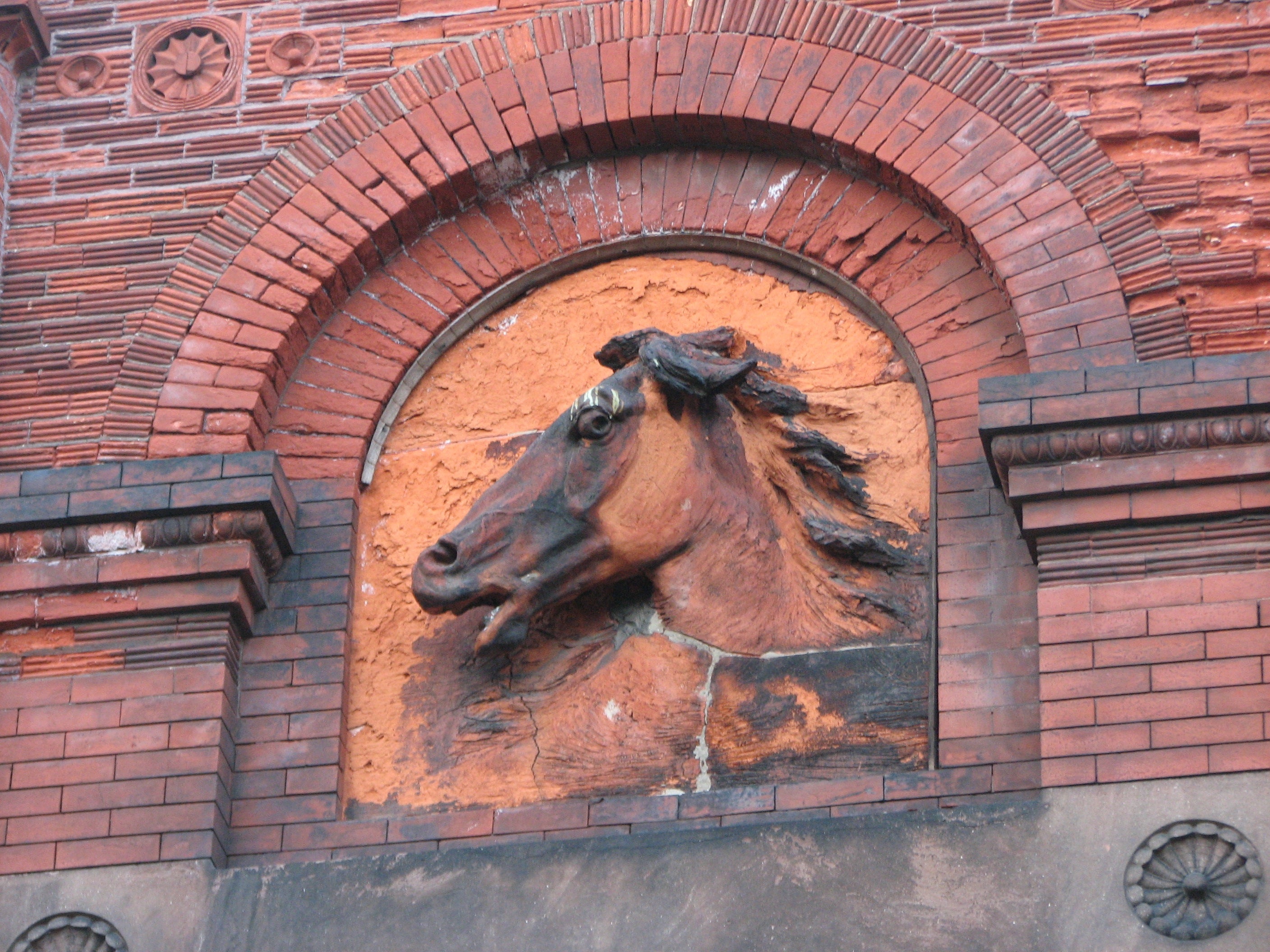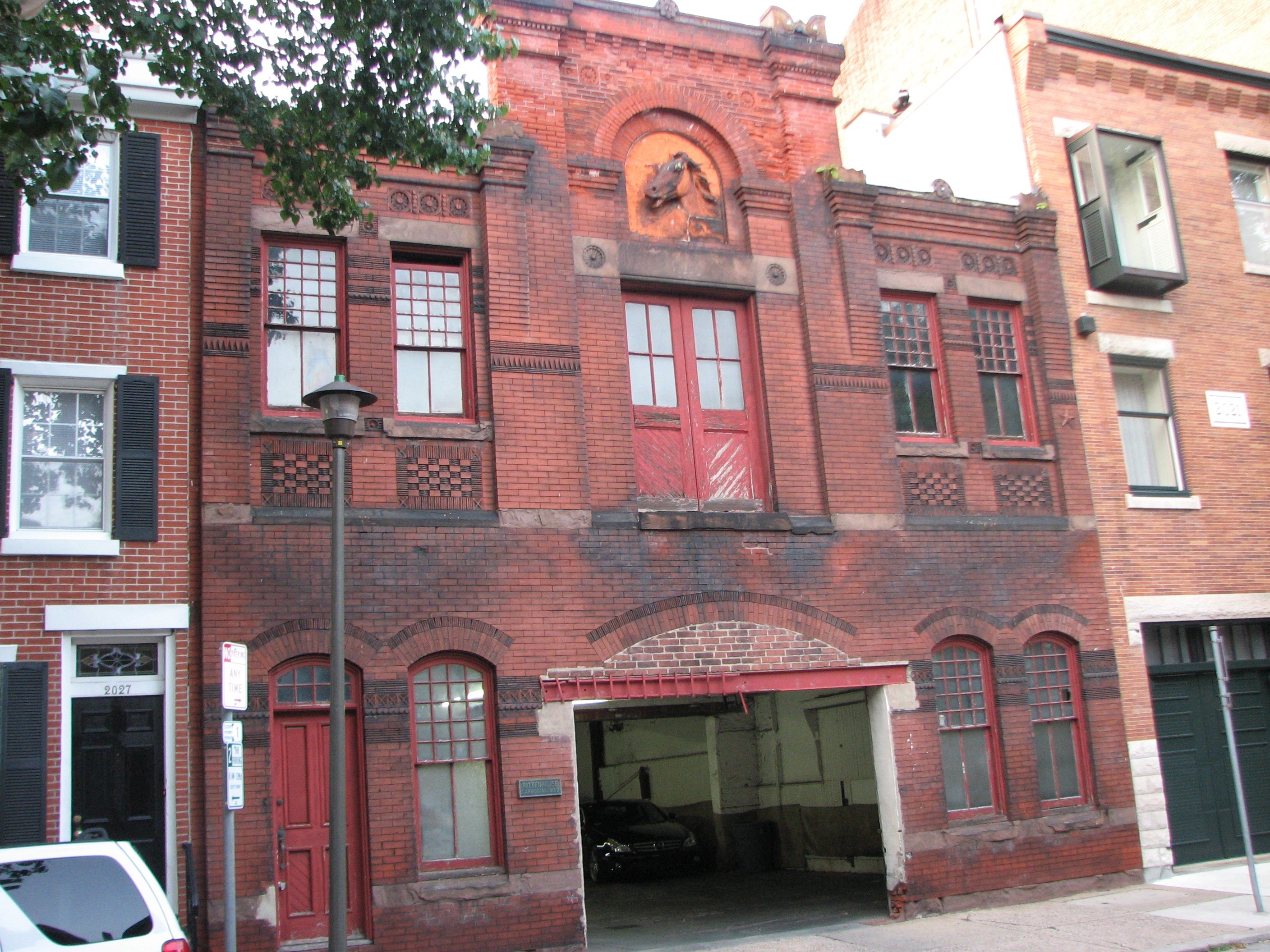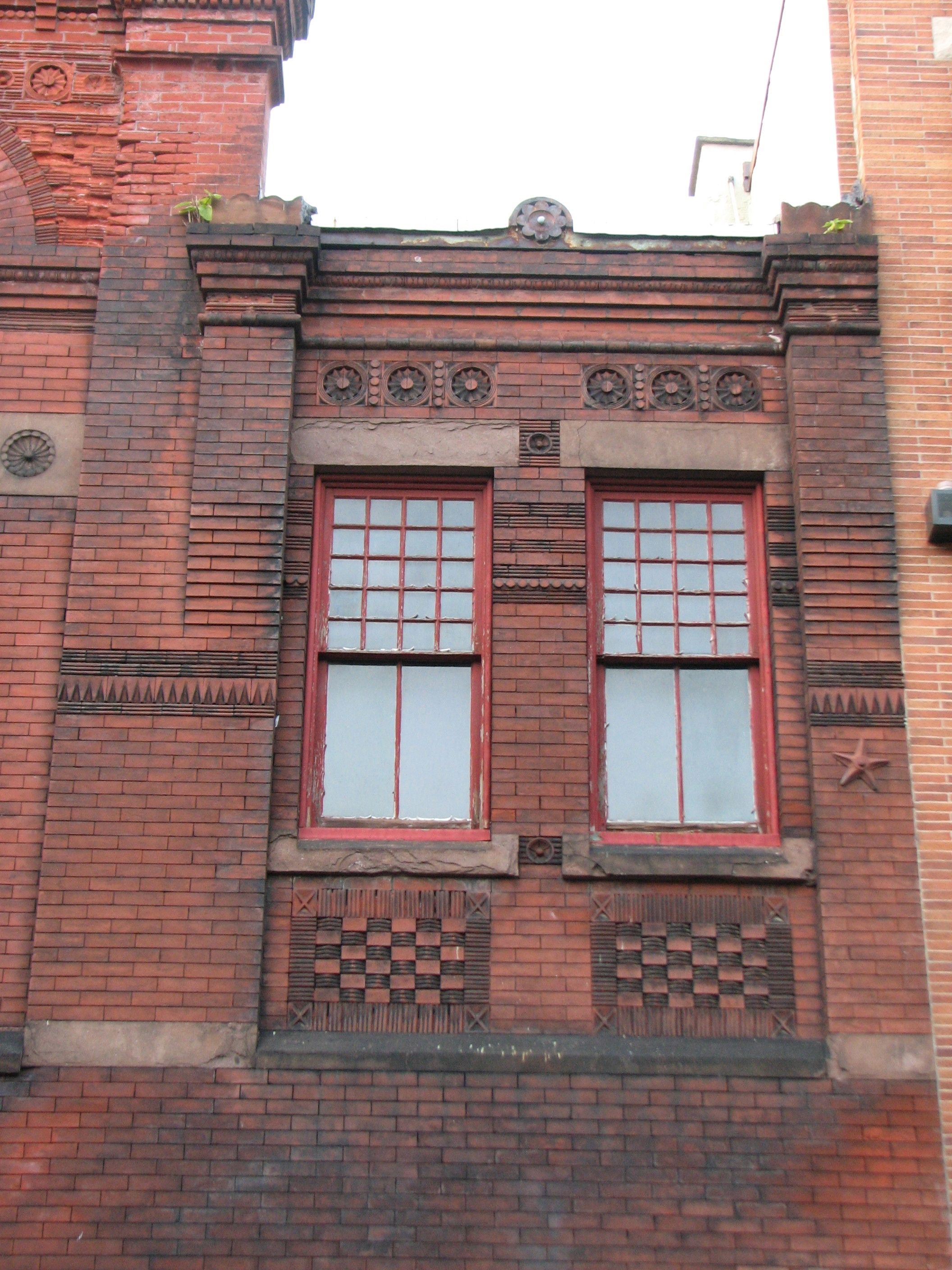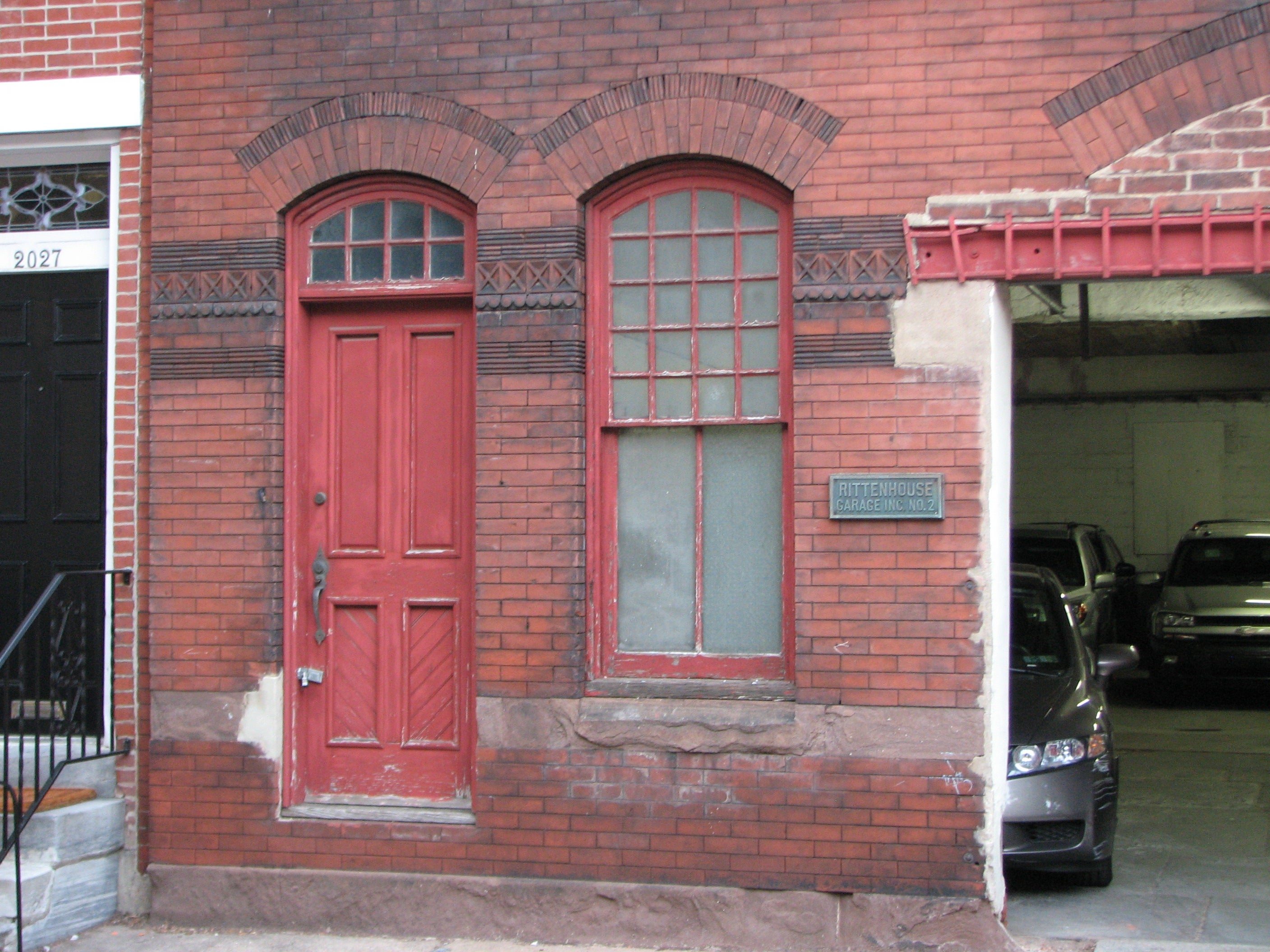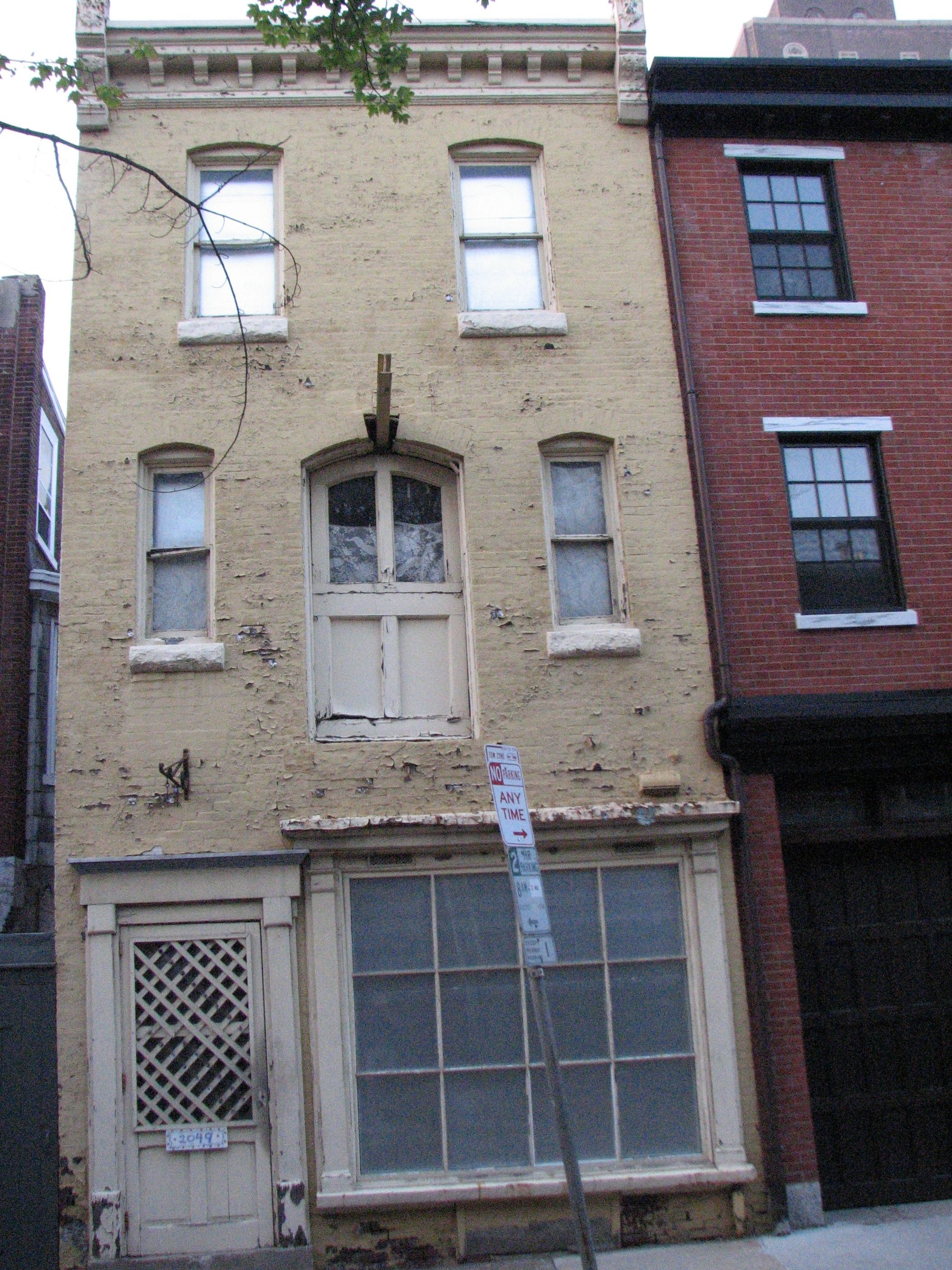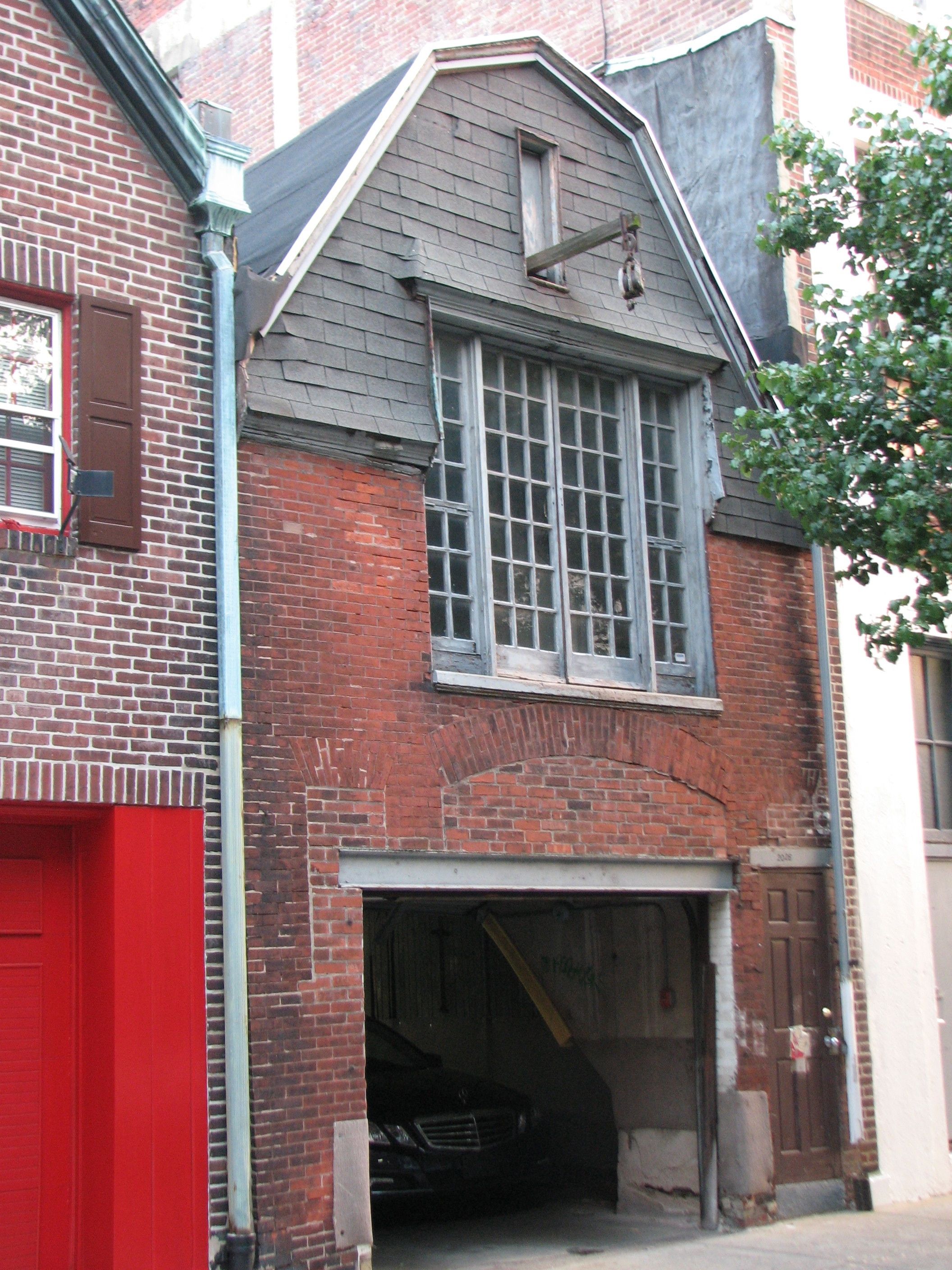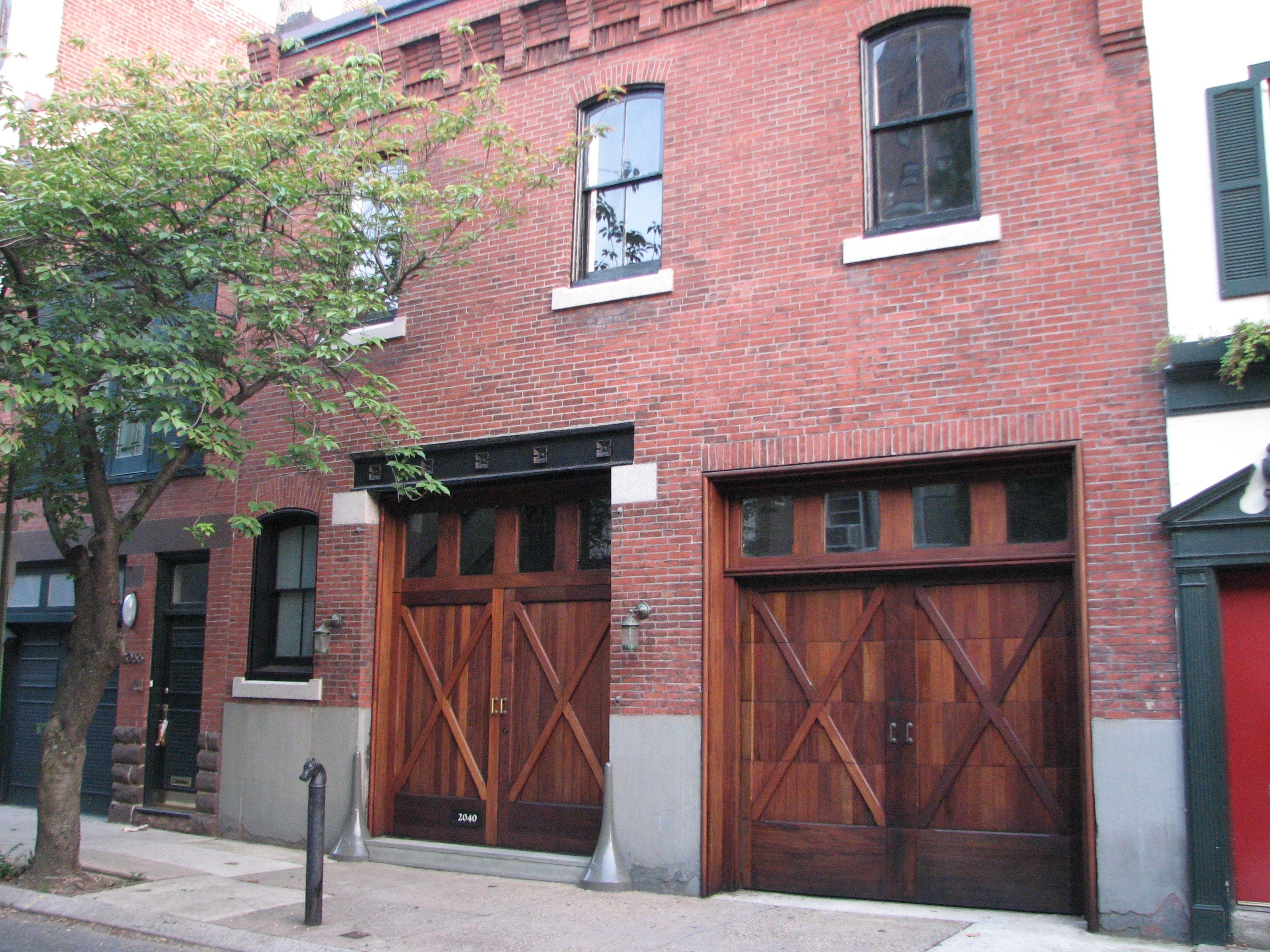Look Up! Rittenhouse Square’s stable row
“Look Up” is a PlanPhilly feature that encourages appreciation of our architectural and historical environment. Each week, the photo essay will focus on a different Philadelphia area neighborhood and its distinctive building styles and details, all of which make up the physical fabric of the city and region.
Rittenhouse Square has been a prestigious address for the city’s prosperous citizens since the mid-1800s. In the latter part of the 19th century, the 2000 block of Rittenhouse Square was the address for their equine transport. Some of the horse stables have survived over a century of change, and some now shelter the horseless carriages of the neighborhood’s affluent residents.
The stallion among the remaining stables is 2023-2025 Rittenhouse. A beautifully rendered, terra cotta horse’s head pokes out from the arch above the second-story loading doors. The building was erected around 1881 as a three-story brick “messuage,” according to Philadelphia Historical Commission files, and was developed into a stable and coach house in 1884. The PHC files do not list the architect or artist.
Rittenhouse Garage Inc. No. 2, the owner of the building, has been cited in recent years for allowing the stable to deteriorate. The Department of Licenses & Inspections called it unsafe, with loose walls and missing bricks, in December 2010. Last April, complaints were filed with L&I citing “significant and unique brick and brownstone cornice deterioration,” maintenance code violations and demolition by neglect.
The stable at 2049 Rittenhouse was built c. 1870. In the 1920s, the carriage entrance was transformed into French-style storefront as the street became a more fashionable shopping corridor. The second-story loading door and pulley support remain. But the building awaits a 21st century restoration.
Other buildings in the Rittenhouse stable row have fared better. Another garage, at 2026 Rittenhouse, retains its Arts & Crafts pitched roof and second-story, small-pane glass doors. The former carriage houses at 2036 and 2040 have been transformed into handsome homes, with entrances and other features that retain the character of their original use.
The 2000 block is part of the Rittenhouse Fitler Residential Historic District designated in 1995.
“Look Up” Fairmount’s contribution to the row home dynamic
“Look Up” Drexel’s Poth Dynasty
“Look Up” Wright’s Ardmore Experiment
“Look Up” Contemporary neighbors in Society Hill
“Look Up” Imaginative Eyre on Locust Street
“Look Up!” Elfreth’s Alley has issues
“Look Up” Architectural exercises on Boathouse Row
“Look Up!” John Notman’s brownstone temples
“Look Up!” 19th Century luxe on Locust St.
“Look Up!: 20th Century evolution in East Falls
“Look Up!” Rural retreats in Northeast Philly
“Look Up!” Modernist lines on Haverford Ave.
“Look Up!” Chestnut Hill’s modernist gems
“Look Up!” The Art Deco Palace of Mt. Airy
“Look Up! An architect’s legacy on Spruce Street
“Look Up!” The French Village in Mt. Airy
“Look Up” and check out the nouveau mansions of North Broad
“Look Up” and check out elegant Southwark
“Look Up” and check out Henry Disston’s company town
“Look Up: and check out Spruce Hill
“Look Up” and check out Green Street
“Look Up” and check out West Laurel Hill
“Look Up” and check out Parkside
“Look Up” and check out Awbury Arboretum
“Look Up” and check out Nicetown
“Look Up” and check out Overbrook Farms
“Look Up” and check out Girard Estate
“Look Up” and check out Rittenhouse/Fitler Square
Contact the writer at ajaffe@planphilly.com.
“Look Up!” The Art Deco Palace of Mt. Airy
“Look Up! An architect’s legacy on Spruce Street
“Look Up!” The French Village in Mt. Airy
“Look Up” and check out the nouveau mansions of North Broad
“Look Up” and check out elegant Southwark
“Look Up” and check out Henry Disston’s company town
“Look Up: and check out Spruce Hill
“Look Up” and check out Green Street
“Look Up” and check out West Laurel Hill
“Look Up” and check out Parkside
“Look Up” and check out Awbury Arboretum
“Look Up” and check out Nicetown
“Look Up” and check out Overbrook Farms
“Look Up” and check out Girard Estate
“Look Up” and check out Rittenhouse/Fitler Square
WHYY is your source for fact-based, in-depth journalism and information. As a nonprofit organization, we rely on financial support from readers like you. Please give today.



